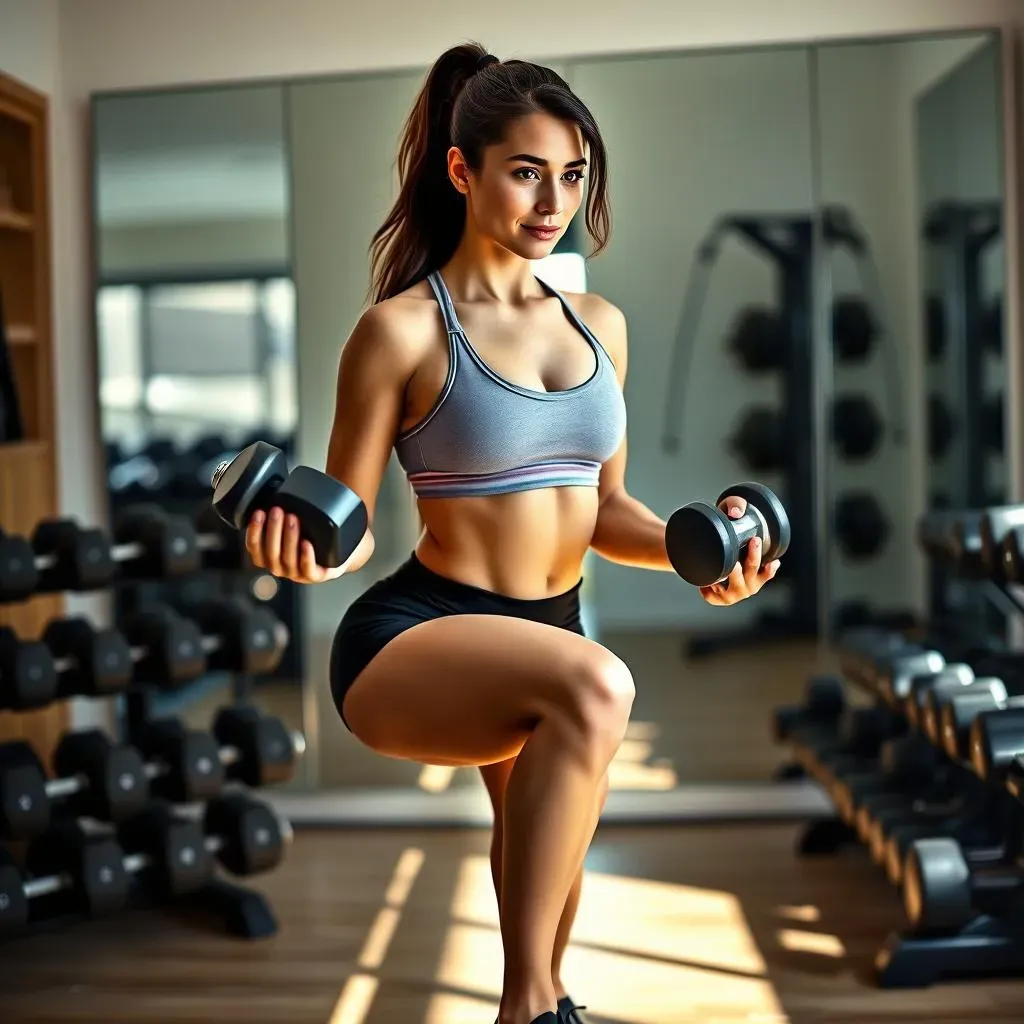Table of Contents
Ready to ditch the crowded gym and build some serious leg strength at home? You don't need fancy machines to sculpt powerful quads, glutes, and hamstrings. In this guide, we're diving into the world of leg workouts at home with dumbbells. I'm going to show you how to transform your lower body with just a pair of dumbbells, some space and your own determination. We'll start with the basics, like squats, that will get your muscles firing. Then we will move on to lunges and their variations that'll challenge your balance and build definition. We'll also cover the mighty deadlift, a powerhouse move for overall lower body strength. Finally, we will finish up with exercises that will target your calves and glutes, making sure no muscle is left behind. So, grab your dumbbells, clear some space, and let's get started on this journey to stronger legs!
Dumbbell Squats: The Foundation of Leg Strength
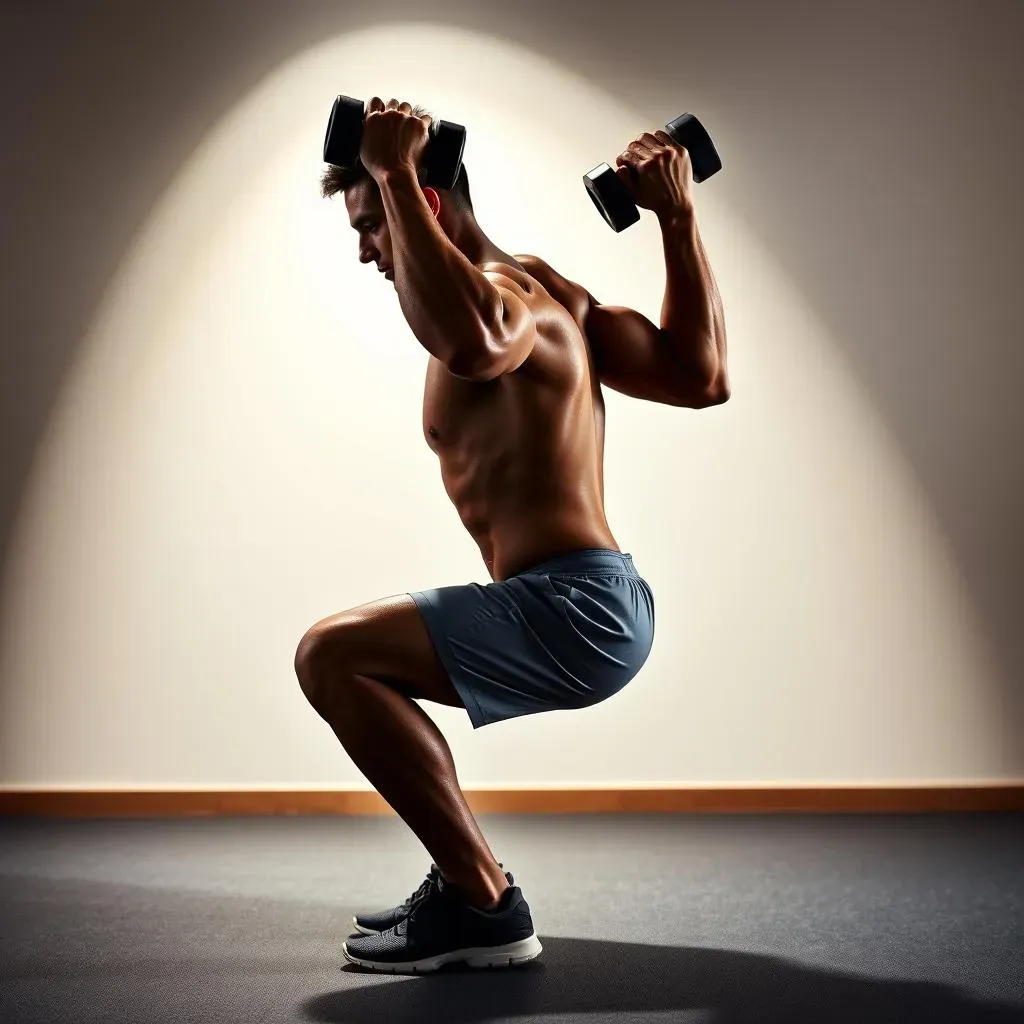
Dumbbell Squats: The Foundation of Leg Strength
Alright, let's talk squats, but not just any squats, we're talking dumbbell squats. These are the bread and butter of any decent leg workout. Think of them as the foundation upon which you'll build the rest of your lower body strength. I've seen so many people skip these, thinking they are too simple, but they are missing out! They're not just about your quads; they engage your glutes, hamstrings, and even your core, making them super efficient for overall strength. It's like a full-body workout disguised as a leg exercise. You can do them anywhere, anytime, and with just a couple of dumbbells. So, if you're serious about building strong legs, you simply cannot ignore the power of the humble dumbbell squat.
Now, I know what some of you might be thinking: "Squats? Boring!" But hold on a second. There are actually a few different ways to tweak your dumbbell squats to keep things interesting and challenging. You could try a goblet squat, holding one dumbbell close to your chest, or a front squat, with the dumbbells in front of your shoulders. Each variation targets your muscles in slightly different ways, which is great for overall development. And don't even get me started on the variations in tempo and depth that you can play with!
- Goblet Squat: Hold one dumbbell close to your chest.
- Front Squat: Hold dumbbells in front of your shoulders.
- Tempo Squats: Slow down the descent and/or ascent.
- Deep Squats: Go as low as your mobility allows.
The key to a good dumbbell squat isn't just about how much weight you're using; it's about your form. Make sure you're keeping your chest up, your back straight, and your knees in line with your toes. Don't let your knees cave in, and don't let your back round. It's better to start with lighter weights and perfect your form, than to go heavy and risk injury. Trust me on that one; I've been there, done that, and it wasn't pretty. Once you've got the form down, you'll be amazed at how much stronger you get with each session.
Lunges & Variations: Sculpting Your Quads and Glutes
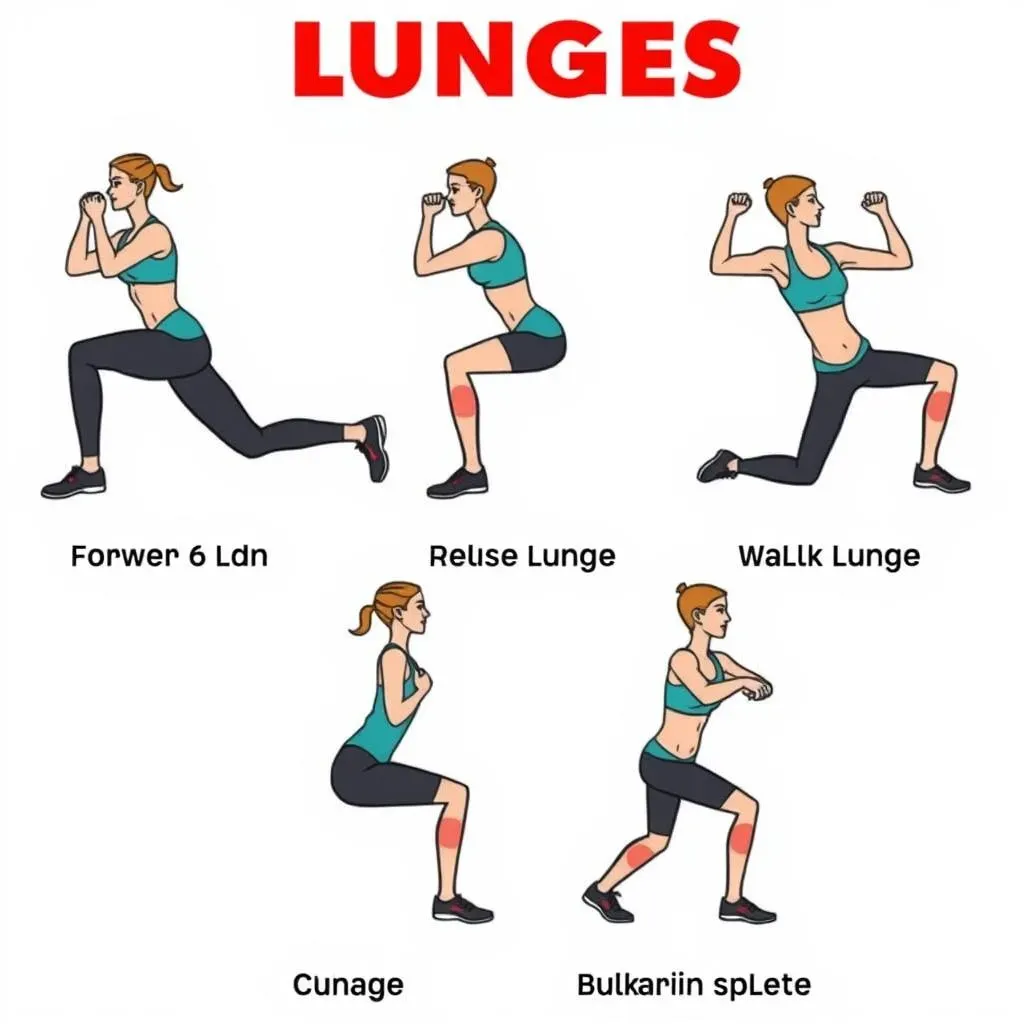
Lunges & Variations: Sculpting Your Quads and Glutes
Alright, let's move on to lunges. If squats are the foundation, lunges are like the architects, shaping and defining your quads and glutes. I used to think they were just a warm-up, but boy was I wrong. Lunges are amazing for building single-leg strength, improving balance, and adding some serious definition to your legs. And just like squats, there are so many ways to do them, each hitting your muscles a little differently. They can be a bit tricky to get right at first, but once you master the form, you'll feel the burn, and see the results. It's all about controlled movements and keeping your core engaged.
Now, you're probably familiar with the classic forward lunge, but let's spice things up a bit. We have reverse lunges, which are great for focusing more on your glutes. Then, there are walking lunges, which will test your balance and coordination. If you want an extra challenge, try adding a twist to your lunge, engaging your core even more. And don't forget about the Bulgarian split squat, it's a real killer, but it seriously helps to isolate each leg and work on any imbalances. Trust me, your legs will be screaming, but in a good way.
Lunge Variation | Primary Focus | Difficulty |
|---|---|---|
Forward Lunge | Quads | Beginner |
Reverse Lunge | Glutes | Beginner/Intermediate |
Walking Lunge | Quads, Glutes, Balance | Intermediate |
Bulgarian Split Squat | Quads, Glutes, Single-Leg Strength | Advanced |
When doing lunges, remember to keep your front knee in line with your ankle and not let it go past your toes. Your back knee should hover just above the ground. It's important to keep your chest up and your core engaged. Don't rush through the movement; focus on controlled, deliberate steps. If you feel any pain, stop and check your form. Lunges are all about precision, not speed. Once you've nailed the basics, you can start adding dumbbells to increase the intensity. Trust me, the burn is worth it.
Dumbbell Deadlifts: Powering Up Your Posterior Chain
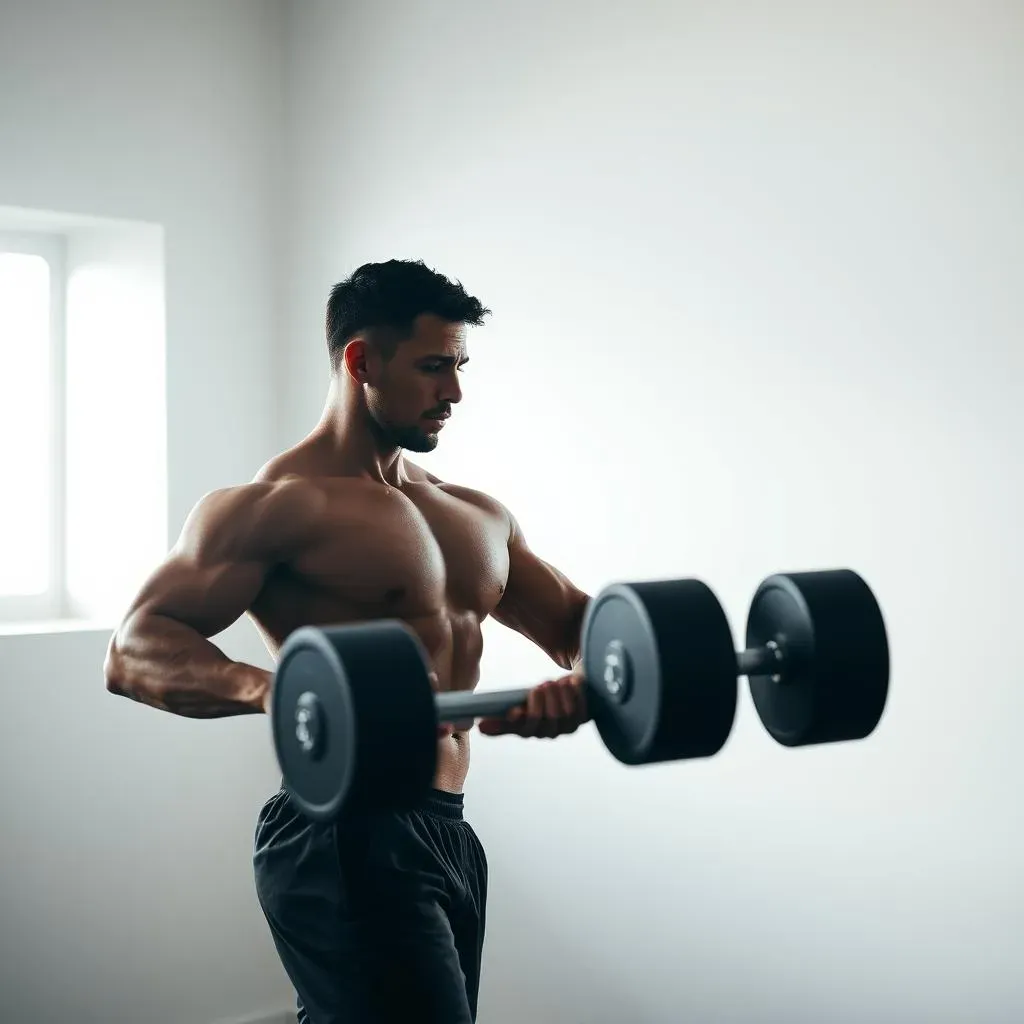
Dumbbell Deadlifts: Powering Up Your Posterior Chain
The Power of the Pull
Okay, now we're getting to the good stuff: dumbbell deadlifts. If you want to build real strength and power, especially in your backside, you can't skip these. I used to think deadlifts were just for bodybuilders, but they're a game-changer for anyone looking to get stronger and more athletic. They work so many muscles at once—your hamstrings, glutes, lower back, and even your core—making them incredibly efficient. Think of it as your body's engine, and deadlifts are the fuel injection.
The beauty of dumbbell deadlifts is that you don't need a ton of equipment. A couple of dumbbells and you're good to go. They're also great for building functional strength, which means the kind of strength you use in everyday life, like lifting heavy boxes or picking up your kids. And let's be honest, who doesn't want a stronger back and glutes? So, if you've been avoiding deadlifts, now's the time to embrace them.
Variations and Form
Now, there are a few ways to approach dumbbell deadlifts, and each has its own little twist. You've got the classic Romanian deadlift (RDL), which is fantastic for targeting your hamstrings. Then there's the standard deadlift, where you start with the dumbbells on the floor. Both are great, but the RDL is my personal favorite for feeling that hamstring stretch. It's all about the hinge at your hips, keeping your back straight, and engaging your core. Think of it as a graceful bowing movement, not a back-breaking lift.
No matter which variation you choose, form is everything. You want to keep your back straight, your chest up, and your core tight. Imagine you're trying to squeeze a pencil between your shoulder blades, that'll help keep your back from rounding. Don't just yank the weight up; control the movement both on the way up and on the way down. It's better to start with lighter weights and perfect your form than to go heavy and risk an injury. Trust me, your lower back will thank you for it.
Deadlift Variation | Primary Focus | Key Benefit |
|---|---|---|
Romanian Deadlift (RDL) | Hamstrings | Greater hamstring stretch |
Standard Deadlift | Hamstrings, Glutes, Lower Back | Full posterior chain engagement |
Safety First
I want to stress this point: safety is paramount. If you're new to deadlifts, start with very light weights or even no weights at all. Focus on getting the movement right before adding any load. If you're unsure about your form, don't hesitate to watch some videos or ask a trainer for guidance. It's always better to be safe than sorry. And remember, listen to your body. If you feel any sharp pain, stop immediately.
Deadlifts are incredibly powerful, but they can also be risky if not done correctly. So, take your time, be patient, and focus on your form. Once you've mastered the movement, you'll be amazed at how much stronger you become. With consistent practice, you'll be pulling those weights like a pro.
Calf Raises & Bridges: Finishing Strong
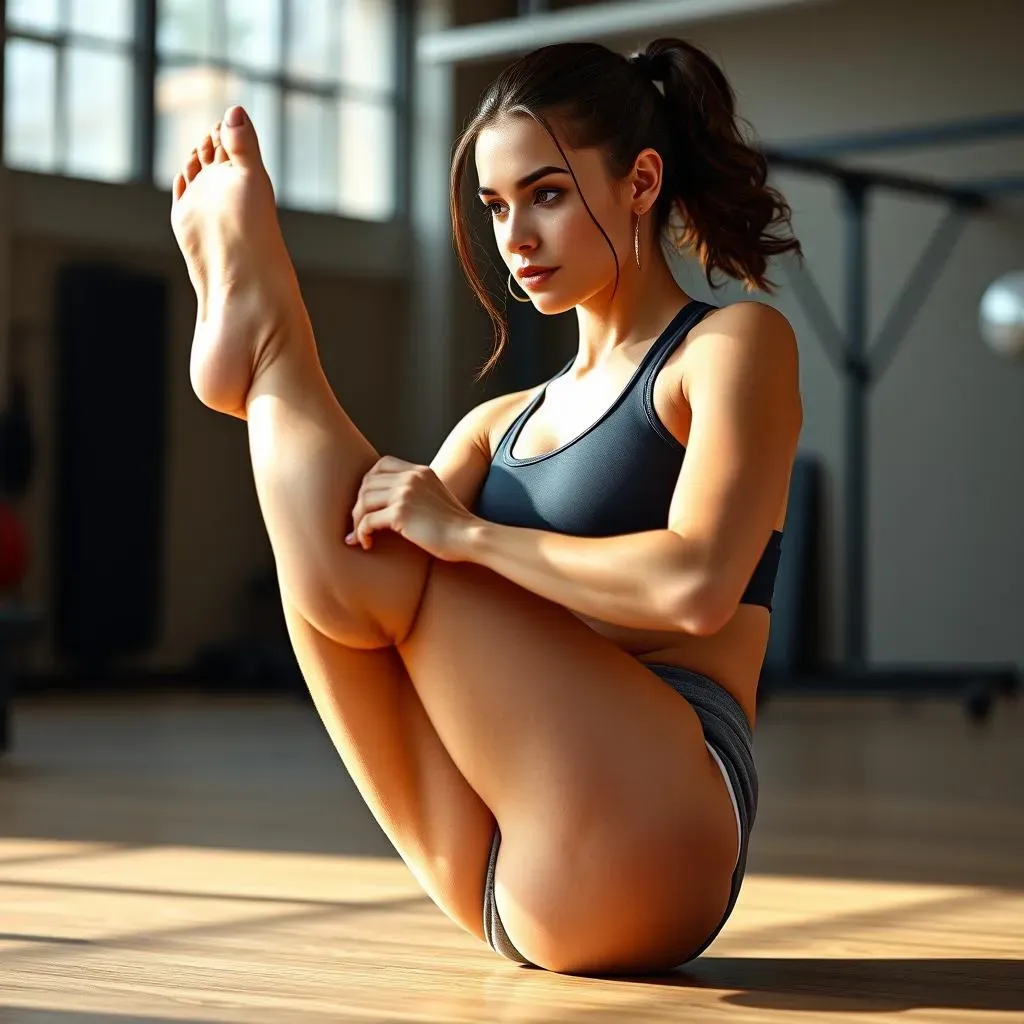
Calf Raises & Bridges: Finishing Strong
The Often-Forgotten Calves
Okay, so we've hit the big muscles, but don't think for a second we're done! We can't forget about our calves, those often-overlooked muscles in our lower legs. I know, I know, they're not as glamorous as quads or glutes, but strong calves are essential for stability, power, and just having a well-rounded physique. Plus, who doesn't want to look good in shorts? Calf raises are the simplest, yet most effective way to target these muscles. They might seem easy at first, but trust me, after a few sets, you'll feel the burn.
You can do calf raises anywhere. You can do them while you're waiting for the coffee to brew, while you are in the line at the grocery store, or during your workout. The basic version involves just standing on your feet and lifting your heels off the ground, but we can make them more challenging with a few tweaks. You can do them on a slightly elevated surface, you can hold dumbbells, or you can even do single-leg calf raises for an extra challenge. It's all about finding what works best for you and your fitness level.
- Standing Calf Raises: Basic version, great for beginners.
- Elevated Calf Raises: Increases range of motion.
- Dumbbell Calf Raises: Adds extra resistance.
- Single-Leg Calf Raises: Improves balance and challenges each calf individually.
Glute Bridges: The Final Push
Now, let's talk glute bridges. If you're looking to round out your leg workout and give your glutes that extra bit of attention, glute bridges are your go-to exercise. I've always loved how they engage my glutes without putting too much pressure on my lower back. These are great for building strength and stability in your hips and core, which is super important for overall fitness and injury prevention. Plus, who doesn't want a stronger, more defined backside?
The basic glute bridge involves lying on your back, bending your knees, and then lifting your hips off the ground, squeezing your glutes at the top. It's simple, but effective. You can make it more challenging by adding a dumbbell across your hips, doing single-leg glute bridges, or adding a resistance band above your knees. The key is to focus on engaging your glutes, not just your lower back. Make sure you’re not arching your back too much during the movement.
Glute Bridge Variation | Primary Focus | Difficulty |
|---|---|---|
Basic Glute Bridge | Glutes, Hamstrings | Beginner |
Dumbbell Glute Bridge | Glutes, Hamstrings | Intermediate |
Single-Leg Glute Bridge | Glutes, Hamstrings, Balance | Intermediate/Advanced |
Resistance Band Glute Bridge | Glutes, Hamstrings, Hip Abductors | Intermediate/Advanced |
Putting It All Together
So, there you have it, our complete dumbbell leg workout. We've covered everything from the foundational squats to the finishing touches like calf raises and glute bridges. Remember, consistency is key. Try to do this workout 2-3 times a week, giving your body enough time to recover between sessions. Don't be afraid to adjust the weights and variations based on your fitness level. It's all about finding what works best for you.
And most importantly, listen to your body. If you're feeling any pain, stop and rest. It's better to take a break than to risk an injury. With patience, consistency, and the right form, you'll be well on your way to building the strong and powerful legs you've always wanted. Remember, every step you take, every rep you do, is a step closer to your goal. So, keep pushing yourself, and never give up on your journey.
